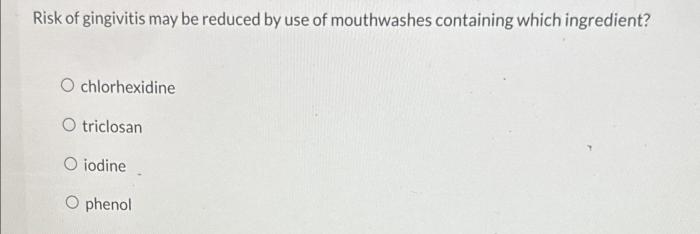Feel lousy feed your dosha, a guide to understanding how your Ayurvedic dosha—Vata, Pitta, or Kapha—influences your well-being and how dietary choices can help restore balance. This exploration delves into the fundamental principles of Ayurveda, connecting your daily meals to your overall health and happiness. It will provide a comprehensive understanding of how imbalances in your dosha manifest as physical, emotional, and mental discomfort, along with actionable strategies for addressing them.
We’ll explore the unique characteristics of each dosha, recognizing that each individual experiences and expresses their dosha imbalances in their own unique way. We’ll also uncover the connection between your dosha and your dietary choices, identifying foods that nourish your specific constitution and those that might exacerbate imbalances. Through a series of tables, practical examples, and visual representations, you’ll gain a deeper understanding of how aligning your lifestyle with your dosha can lead to a healthier, more balanced you.
Understanding Doshas

Ayurveda, an ancient Indian system of medicine, views the human body as a microcosm of the universe. It posits that three fundamental energies, or doshas, govern our physical and mental well-being: Vata, Pitta, and Kapha. These doshas are not static entities but rather dynamic forces that constantly interact and shift within us. Understanding our individual dosha constitution and how to maintain balance is crucial for optimal health and vitality.The concept of doshas emphasizes that imbalances within these energies can lead to various health issues.
This understanding allows for personalized approaches to healing and well-being, recognizing that each individual has a unique interplay of these energies.
The Three Doshas
Ayurveda categorizes individuals based on the dominant dosha in their constitution. This understanding helps explain individual tendencies and sensitivities. A balanced state of these energies fosters optimal health.
| Dosha | Characteristics | Imbalance Symptoms | Potential Remedies |
|---|---|---|---|
| Vata | Light, mobile, restless, and changeable. Associated with movement, air, and space. Individuals with a dominant Vata dosha tend to be creative, adaptable, and quick-witted, but can also be prone to anxiety, dryness, and joint pain. | Dryness, anxiety, insomnia, constipation, joint pain, low blood pressure, and digestive issues. Sudden mood swings, nervousness, and a feeling of being disconnected are also common. | Warm, grounding foods, regular sleep schedules, and stress-reducing activities. Activities like yoga and meditation can be beneficial. Avoid extreme cold or sudden changes in temperature. |
| Pitta | Fiery, energetic, and transforming. Associated with fire and water. Individuals with a dominant Pitta dosha tend to be intelligent, focused, and passionate, but can also be prone to anger, inflammation, and digestive issues. | Inflammation, anger, frustration, indigestion, acid reflux, skin issues, and high blood pressure. Individuals may experience a sense of restlessness and feel overly critical of themselves or others. | Cool foods and drinks, calming activities like spending time in nature, and practices like mindfulness. Avoid spicy or overly hot foods. Rest and relaxation are essential. |
| Kapha | Heavy, stable, and grounded. Associated with earth and water. Individuals with a dominant Kapha dosha tend to be calm, compassionate, and resilient, but can also be prone to lethargy, weight gain, and congestion. | Lethargy, weight gain, congestion, sinus problems, respiratory issues, and a tendency towards emotional sluggishness. Individuals may feel overly sentimental or experience difficulty in making decisions. | Light exercise, warming spices, and practices to promote circulation. Regular physical activity, mindful eating, and stress reduction are important. Avoid overindulgence in cold or heavy foods. |
Understanding Imbalances, Feel lousy feed your dosha
Recognizing the signs of an imbalance in each dosha is essential for maintaining overall health. Understanding these imbalances is crucial for personalized health strategies. By paying attention to the specific symptoms, you can take targeted steps to restore balance.
Recognizing “Feeling Lousy”
Feeling unwell, or “feeling lousy,” can manifest in a multitude of ways, encompassing physical, emotional, and mental discomfort. Understanding these varied expressions is crucial for accurately assessing imbalances within our bodies and minds, especially when considering the unique principles of Ayurveda. This holistic approach recognizes that our individual constitutions, or doshas, play a significant role in how we experience illness.Identifying the specific nature of these symptoms is the first step in understanding the root cause and initiating appropriate remedies.
By acknowledging the subtle and overt signs of imbalance, we can cultivate a deeper connection with our own well-being and implement strategies for restoration and prevention.
Various Expressions of Feeling Unwell
Recognizing “feeling lousy” involves acknowledging a range of experiences beyond just physical symptoms. This encompasses a spectrum of physical, emotional, and mental sensations. For instance, feeling drained, irritable, or experiencing a lack of mental clarity can all be indicative of an underlying imbalance.
- Physical symptoms can include aches, pains, fatigue, digestive issues, or sleep disturbances.
- Emotional responses might manifest as anxiety, irritability, sadness, or a general feeling of overwhelm.
- Mental aspects could include difficulty concentrating, forgetfulness, or a decreased capacity for joy.
Common Physical Symptoms and Potential Dosha Imbalances
A deeper understanding of the interplay between physical symptoms and dosha imbalances is essential. By recognizing patterns, we can begin to tailor interventions that address the root cause of the discomfort.
| Physical Symptom | Potential Vata Imbalance | Potential Pitta Imbalance | Potential Kapha Imbalance |
|---|---|---|---|
| Headaches | Frequent, throbbing headaches, often worsened by stress or changes in weather | Intense, burning headaches, possibly accompanied by redness and warmth in the face | Chronic, dull headaches, sometimes accompanied by congestion |
| Digestive Issues | Bloating, gas, and erratic bowel movements, sometimes accompanied by anxiety | Heartburn, indigestion, nausea, and sometimes ulcers | Bloating, sluggish digestion, and possibly constipation or diarrhea |
| Skin Issues | Dry, flaky skin, or skin that is easily irritated | Acne, rashes, inflammation, and redness | Oily skin, acne, and a tendency towards water retention |
| Fatigue | Feeling easily drained and exhausted, with fluctuations in energy levels | Exhaustion accompanied by a feeling of heat and restlessness | Feeling constantly sluggish, with a lack of motivation |
Considering Individual Constitution and Lifestyle
It is vital to recognize that each individual’s constitution and lifestyle will influence how they experience and express these imbalances. A person with a predominantly Vata constitution might experience symptoms differently than someone with a Pitta or Kapha constitution. Factors like diet, stress levels, sleep patterns, and environmental exposures all contribute to the overall picture. This multifaceted approach is crucial for achieving a holistic understanding of the individual’s health.
A comprehensive assessment considers these elements in addition to the specific symptoms.
Connecting Dosha Imbalance to Dietary Choices
Dietary choices play a crucial role in maintaining a healthy balance of your doshas. Understanding which foods nourish and support each dosha, and which can disrupt the delicate equilibrium, is essential for overall well-being. A personalized approach to eating, tailored to your specific dosha, can significantly contribute to managing imbalances and promoting optimal health.Maintaining a harmonious balance between your Vata, Pitta, and Kapha doshas requires mindful attention to your dietary intake.
Feeling under the weather? Sometimes, taking care of your well-being means understanding your dosha, and tuning into your body’s needs. Just like choosing the best places to get top-grade education for free, finding the right resources to understand and balance your dosha can be a game-changer. Ultimately, understanding your dosha and making mindful choices about your diet and lifestyle will help you feel your best.
Certain foods have inherent qualities that either strengthen or weaken specific doshas. By understanding these energetic properties, you can make conscious choices that support your overall well-being and prevent or alleviate imbalances.
Ideal Foods for Each Dosha
The right foods for each dosha type nourish and support its unique energy signature. Vata dosha individuals often benefit from foods that are grounding and stabilizing. Pitta types may find relief with cooling and soothing foods. Kapha individuals, on the other hand, can find support from foods that are warming and stimulating.
- Vata: Focus on warm, cooked, and easily digestible foods. These include warm soups, stews, cooked grains like brown rice, and root vegetables like sweet potatoes and carrots. Avoid overly cold or raw foods, and opt for foods that are rich in healthy fats like nuts and seeds.
- Pitta: Cooling foods are paramount. Include cucumber, spinach, leafy greens, and yogurt. Avoid overly spicy or hot foods, as these can exacerbate Pitta imbalances. Opt for fruits like watermelon and berries, which have a cooling effect.
- Kapha: Stimulating and warming foods are best. Include ginger, garlic, and spices like turmeric and cinnamon. Avoid heavy, greasy, and sweet foods, as these can further promote Kapha imbalances. Warm beverages like herbal teas can be beneficial.
Foods That Might Exacerbate Imbalances
Certain foods can disrupt the balance of your doshas, leading to discomfort or worsening existing imbalances. Knowing which foods to avoid, or to consume in moderation, is crucial for maintaining overall well-being.
Feeling a bit under the weather? Sometimes, the smallest actions of wonderful people, like remembering your favorite tea or offering a listening ear, can build incredibly deep relationships. Think about how those little gestures can nourish your soul and improve your overall well-being. It’s a reminder that, just like nourishing your body with the right foods, nurturing your relationships can make a huge difference when you’re feeling lousy.
And that’s where understanding your dosha and feeding it appropriately comes in, like learning to recognize what your body needs when you’re feeling under the weather. Check out this article on small things wonderful people tht build deep relationships for more insight into building strong connections.
- Vata: Foods that are dry, cold, or light, like raw vegetables, ice cream, and airy foods, can exacerbate Vata imbalances. Avoid excessive amounts of salads, raw fruits, and cold drinks. These can lead to further feelings of dryness, anxiety, or fatigue.
- Pitta: Foods that are overly spicy, acidic, or hot, like chili peppers, vinegar-based dressings, and coffee, can exacerbate Pitta imbalances. These can lead to increased feelings of anger, irritability, or digestive discomfort. Avoid excessively hot or spicy foods, and opt for more neutral options.
- Kapha: Foods that are heavy, sweet, and oily, like refined sugars, white bread, and fried foods, can exacerbate Kapha imbalances. These can lead to feelings of sluggishness, heaviness, or difficulty digesting food. Moderation and careful selection of these foods is recommended.
Suitable and Unsuitable Foods for Each Dosha
The following table provides a concise overview of suitable and unsuitable foods for each dosha type. This table will help you make informed dietary choices.
| Dosha | Suitable Foods | Unsuitable Foods |
|---|---|---|
| Vata | Warm soups, cooked grains, root vegetables, nuts, seeds, healthy fats | Raw vegetables, ice cream, airy foods, cold drinks, excessive salads |
| Pitta | Cooling foods (cucumber, spinach, leafy greens, yogurt, watermelon, berries), neutral foods | Spicy foods, acidic foods, hot beverages (coffee), excessively hot or spicy dishes |
| Kapha | Warming foods (ginger, garlic, spices like turmeric, cinnamon), stimulating foods | Heavy, greasy, sweet foods (refined sugars, white bread, fried foods), overly rich dishes |
Diet and Lifestyle Recommendations
Restoring balance to your dosha isn’t just about what you eat; it’s a holistic approach that encompasses your entire lifestyle. Understanding your specific dosha imbalances allows for targeted dietary and lifestyle adjustments that promote equilibrium and well-being. Mindful choices, from the food you consume to the way you manage stress, all play a crucial role in achieving a healthy dosha balance.By implementing the right dietary and lifestyle strategies, you can actively work towards a more harmonious state of being, where your dosha is in equilibrium and your overall health thrives.
This involves recognizing the specific needs of your dosha and adapting your routine to support it.
Dietary Strategies for Restoring Dosha Balance
A tailored approach to diet is essential for restoring dosha balance. Different doshas have varying nutritional requirements. Understanding these requirements enables you to make informed choices that nourish your body and promote overall well-being.
- Vata Dosha: Focus on warming and grounding foods. Include wholesome grains, cooked vegetables, warm soups, and root vegetables. Avoid excessive cold or raw foods, as these can exacerbate Vata imbalances. Incorporate healthy fats like ghee and nuts in moderation.
- Pitta Dosha: Prioritize cooling and balancing foods. Choose fruits, vegetables, and light proteins. Limit spicy, acidic, and overly hot foods, as these can inflame Pitta. Include foods rich in antioxidants to help balance Pitta’s energy.
- Kapha Dosha: Focus on foods that are light and easily digestible. Choose fresh fruits and vegetables, lean proteins, and spices to help reduce Kapha’s tendency towards heaviness. Limit processed foods, dairy, and rich, heavy foods.
Lifestyle Adjustments to Support a Balanced Dosha
Beyond diet, lifestyle adjustments significantly impact your dosha balance. Consistency and mindfulness in these areas are key to achieving and maintaining equilibrium.
- Regular Exercise: Physical activity helps to regulate dosha energies. Choose activities that resonate with your dosha and energy levels. For example, Vata doshas might benefit from grounding activities like yoga or walking, while Pitta doshas could find relief in calming practices like gentle stretching. Kapha doshas might find benefit in more vigorous activities like running or swimming.
- Mindful Eating: Pay attention to your body’s hunger and fullness cues. Avoid eating when stressed or rushed. Savor each bite, and appreciate the nourishment you’re providing your body.
- Stress Management Techniques: Chronic stress can disrupt dosha balance. Incorporate stress-reducing practices such as meditation, deep breathing exercises, or spending time in nature. Identify your specific stress triggers and develop strategies to mitigate their impact.
- Sufficient Sleep: Adequate sleep is crucial for maintaining healthy dosha balance. Aim for 7-9 hours of quality sleep each night. Create a relaxing bedtime routine to signal your body that it’s time to rest.
Significance of Mindful Eating and Stress Management
Mindful eating and stress management are crucial for maintaining dosha balance. These practices are interconnected and affect your overall well-being.Mindful eating goes beyond simply consuming food. It involves paying attention to the sensations of hunger, fullness, and taste. This heightened awareness allows you to make conscious choices that align with your dosha and overall health.Stress management plays a critical role in maintaining a healthy dosha balance.
Stress can disrupt the delicate equilibrium of your doshas, leading to imbalances and related health concerns. Incorporating stress-reducing techniques allows you to manage and mitigate these disruptions, supporting overall health.
Importance of Regular Exercise and Proper Sleep
Regular exercise and proper sleep are fundamental to maintaining a healthy lifestyle and achieving a balanced dosha. These two factors significantly impact your energy levels, mood, and overall well-being.Regular exercise helps to regulate your energy flow and improve circulation. It can also help to reduce stress and promote relaxation. Proper sleep is essential for restoring energy and promoting overall health.
Sufficient sleep allows your body to repair and rejuvenate, supporting the natural balance of your doshas.
Addressing Specific Dosha Imbalances
Understanding your individual dosha imbalance is the first step toward restoring equilibrium. Once you’ve identified which dosha is out of balance, you can tailor your approach to address the specific symptoms and restore harmony. This involves a combination of dietary changes, lifestyle modifications, and potentially, herbal remedies. By addressing the root cause of the imbalance, you can experience a significant improvement in your overall well-being.
Vata Imbalance: Symptoms and Solutions
Vata imbalances often manifest as feelings of dryness, anxiety, and instability. They can affect both physical and mental health, creating a sense of unease and disconnection. Vata’s inherent lightness and mobility can become erratic when imbalanced, leading to symptoms like irregular bowel movements, sleep disturbances, and a feeling of being overwhelmed.
- Dietary Changes: Focus on warming, grounding foods. Incorporate warm soups, stews, and cooked grains. Avoid overly dry or raw foods. Include healthy fats like ghee and coconut oil to nourish and balance the dosha.
- Lifestyle Modifications: Establish a regular sleep schedule, and incorporate calming activities like yoga and meditation. Reduce stress through mindful practices. Create a structured daily routine to provide stability.
- Herbal Remedies: Consider herbs like ashwagandha and shatavari, known for their grounding and calming properties. Consult a qualified practitioner for personalized recommendations.
Pitta Imbalance: Symptoms and Solutions
Pitta imbalances often lead to feelings of heat, irritation, and inflammation. These imbalances can manifest as digestive issues, skin problems, and emotional irritability. Pitta’s fiery nature, when out of balance, can lead to feelings of anger and frustration.
- Dietary Changes: Focus on cooling foods. Increase intake of cucumber, leafy greens, and fruits like watermelon. Limit spicy foods, caffeine, and alcohol. Avoid overly acidic foods.
- Lifestyle Modifications: Practice relaxation techniques like deep breathing and progressive muscle relaxation. Reduce exposure to heat and sunlight. Spend time in nature to cool down.
- Herbal Remedies: Herbs like coriander, tulsi, and licorice root are known for their cooling properties. Seek professional guidance for appropriate dosage and use.
Kapha Imbalance: Symptoms and Solutions
Kapha imbalances often manifest as feelings of heaviness, sluggishness, and congestion. They can lead to weight gain, a weakened immune system, and a general feeling of being stuck. Kapha’s grounding nature, when imbalanced, can result in a feeling of being weighed down and lethargic.
- Dietary Changes: Focus on lighter, warming foods. Increase intake of fresh fruits, vegetables, and lean proteins. Reduce consumption of heavy, creamy, and oily foods. Limit foods that are overly sweet or dense.
- Lifestyle Modifications: Incorporate regular exercise to stimulate energy flow. Spend time in nature. Practice light yoga poses to increase movement and vitality.
- Herbal Remedies: Consider herbs like ginger, cinnamon, and cardamom for their warming and stimulating properties. Seek professional guidance for proper use and dosage.
Dosha Imbalance Symptom Guide
| Dosha Imbalance | Common Symptoms | Suggested Remedies |
|---|---|---|
| Vata | Dryness, anxiety, insomnia, irregular bowel movements, and feeling overwhelmed | Warm, grounding foods; regular sleep schedule; calming activities; structured routine |
| Pitta | Heat, irritation, inflammation, digestive issues, skin problems, and anger | Cooling foods; relaxation techniques; reducing heat exposure; spending time in nature |
| Kapha | Heaviness, sluggishness, congestion, weight gain, weakened immunity, and feeling stuck | Light, warming foods; regular exercise; spending time in nature; light yoga |
Visual Representation of Dosha Principles
Understanding doshas is more than just theoretical knowledge; it’s about experiencing a tangible connection with your well-being. Visual representations can help solidify this connection, allowing us to see the dynamic interplay between diet, lifestyle, and dosha balance. This visual approach offers a fresh perspective, making the concepts of Vata, Pitta, and Kapha more accessible and relatable.Visualizing doshas provides a powerful tool for self-discovery and personal growth.
By seeing the interconnectedness of these principles, you can better understand how your lifestyle choices impact your overall health and well-being. This is a journey of self-awareness, and the visualizations will be a guiding compass.
Feeling a bit under the weather? It might be time to tune into your dosha! Understanding how your dosha affects your energy levels can help you feel better. Sometimes, though, the people around us can drain our happiness. Learning to recognize the 11 kinds of people who shouldn’t take center stage in our lives is crucial for maintaining our well-being.
This article dives deep into those personalities. Ultimately, prioritizing self-care, like understanding and nurturing your dosha, is key to feeling your best, no matter what’s happening around you.
Visualizing Dosha Imbalance and Balance
“A balanced dosha is like a well-oiled machine; an imbalanced dosha is like a machine with a broken part.”
A visual representation of dosha imbalance can be depicted as a seesaw. One side represents the qualities of a specific dosha (e.g., Vata’s lightness and movement), while the other side represents its imbalance (e.g., excessive dryness or restlessness). The middle, representing balance, is the ideal state. A healthy lifestyle, incorporating a diet tailored to your dosha, keeps the seesaw balanced.
Characteristics of Each Dosha
The essence of each dosha can be illustrated through evocative imagery. Vata, the air element, is depicted as a flowing river, ever-changing and dynamic. It is symbolized by a graceful dancer, embodying lightness, movement, and adaptability. Pitta, the fire element, is a vibrant flame, representing energy, passion, and transformation. Think of a blazing sun, full of warmth and drive.
Kapha, the earth element, is depicted as a sturdy mountain, representing stability, groundedness, and nourishment. Imagine a nourishing bowl of rich, wholesome food, embodying strength and resilience.
Interconnectedness of Diet, Lifestyle, and Dosha Balance
Visual aids illustrating the interconnectedness can be created using a circular diagram. The circle’s center represents your overall well-being. Branches radiating outwards can depict diet, lifestyle (exercise, sleep, stress management), and the three doshas (Vata, Pitta, Kapha). Each branch connects to the center, emphasizing the vital role each plays in maintaining balance.
Visualizing “Feeling Lousy” and Restorative Qualities
Visual metaphors can help express the feeling of “feeling lousy” when a dosha is imbalanced. A stagnant pond, reflecting a clouded sky, can represent the sluggishness and discomfort associated with an imbalanced Kapha dosha. A flickering candle, struggling to stay alight, could represent the anxiety and restlessness associated with an imbalanced Vata dosha. A boiling pot, overflowing with anger, can illustrate the intensity and irritability of an imbalanced Pitta dosha.The restorative qualities of balancing doshas can be visualized as a revitalized garden.
A well-watered garden, filled with vibrant flowers and lush foliage, can represent the harmony and vitality achieved through a balanced lifestyle. Imagine the garden flourishing with the proper nourishment and tending. This represents the positive outcome of aligning diet and lifestyle with your dosha.
Examples of Imagery
Imagine a vibrant mandala, intricately designed with the elements of nature. Each color can represent a specific dosha. A harmonious blend of colors indicates balance, while an imbalance manifests as a disruption in the colors’ harmony.Another visualization could be a tapestry woven with threads of different textures and colors. Smooth threads symbolize Kapha, rough threads symbolize Vata, and bright threads symbolize Pitta.
The overall texture and color combination showcase the unique blend of doshas in a person.
Case Studies and Practical Examples

Bringing the principles of dosha balance to life is more than just theory; it’s about seeing how dietary changes and lifestyle adjustments can positively impact individuals. Real-world examples illuminate how understanding your dosha can empower you to cultivate a healthier and more harmonious existence. These stories demonstrate the practical application of the principles, showing how aligning diet with individual needs can lead to remarkable improvements in well-being.This section delves into the personal experiences of individuals who successfully navigated dosha imbalances through dietary and lifestyle modifications.
We will explore the positive outcomes of aligning their diets with their specific dosha needs, showcasing practical examples for readers to apply these principles to their own lives.
Individual Dosha Balancing Experiences
These accounts highlight the tangible benefits of personalized dietary and lifestyle approaches tailored to individual dosha imbalances. Each case demonstrates the power of mindful choices in restoring balance and promoting overall well-being.
- A Vata individual, Sarah, experienced chronic fatigue and anxiety. Recognizing her Vata tendencies, she incorporated grounding foods like warm soups and roasted vegetables into her diet. She also prioritized regular sleep and mindful movement like yoga. Over time, Sarah noticed a significant reduction in her anxiety and an increase in energy levels. This highlights the importance of nourishing the Vata dosha with stable, grounding elements.
- A Pitta individual, David, struggled with digestive issues and irritability. He discovered that his Pitta imbalance was linked to his spicy and acidic food choices. By reducing these inflammatory foods and incorporating cooling foods like cucumber and yogurt, David experienced a noticeable improvement in his digestion and emotional well-being. This demonstrates how Pitta individuals can mitigate imbalances by incorporating cooling and soothing elements into their diets.
- A Kapha individual, Emily, noticed she was feeling sluggish and weighed down. Recognizing her Kapha tendencies, she incorporated more light, easily digestible foods like fruits and vegetables. She also started engaging in more frequent physical activity, which helped her maintain a healthy weight and boost energy levels. Emily’s experience demonstrates how Kapha individuals can promote balance by incorporating lighter foods and engaging in regular physical activity.
Dietary Adjustments for Specific Dosha Imbalances
Implementing specific dietary adjustments tailored to each dosha can significantly improve overall well-being.
| Dosha | Imbalance Symptoms | Dietary Recommendations |
|---|---|---|
| Vata | Anxiety, fatigue, digestive issues | Warm, cooked foods, stable carbohydrates, regular meals, and grounding spices like ginger. |
| Pitta | Irritability, digestive issues, skin problems | Cooling foods like cucumber, yogurt, and leafy greens, avoidance of overly spicy and acidic foods. |
| Kapha | Sluggishness, weight gain, digestive issues | Light, easily digestible foods, incorporating fruits and vegetables, regular physical activity. |
Lifestyle Modifications Supporting Dosha Balance
Integrating lifestyle modifications alongside dietary changes can further enhance the positive impact of dosha-specific strategies.
- Regular sleep schedules are crucial for all doshas. Sufficient rest allows the body to restore balance.
- Mindful movement, such as yoga or walking, can help maintain a sense of calm and balance for all doshas. The specific type of movement can be adapted to the individual dosha’s needs.
- Stress management techniques like meditation or deep breathing exercises can help reduce stress and promote balance for all doshas. The techniques can be adapted to individual dosha needs.
Last Word: Feel Lousy Feed Your Dosha
In conclusion, feel lousy feed your dosha is more than just a diet; it’s a holistic approach to understanding your unique constitution and its influence on your well-being. By aligning your dietary choices and lifestyle with your dosha, you can cultivate a deeper connection with your body, identify the root causes of discomfort, and cultivate a path toward greater health and harmony.
This journey will equip you with the tools and knowledge to effectively navigate your health challenges and create a balanced, fulfilling life.











